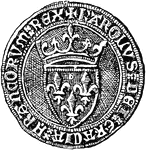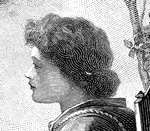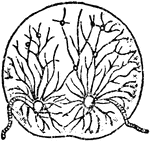
Stage One in the Fission of Noctiluca Scintillans
An illustration of the first stage of fission in the Noctiluca scintillans. Noctiluca scintillans, also…

Stage Two in the Fission of Noctiluca Scintillans
An illustration of the second stage of fission in the Noctiluca scintillans. Noctiluca scintillans,…
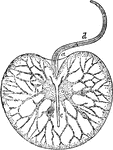
Aboral Side View of the Noctiluca Scintillans
An illustration of the aboral side view of the Noctiluca scintillans. Noctiluca scintillans, also published…
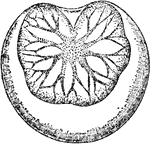
Noctiluca Scintillans
An illustration of the Noctiluca scintillans. Noctiluca scintillans, also published as Noctiluca miliaris,…

Lateral View of Noctiluca Scintillans
An illustration of the lateral view of the Noctiluca scintillans. Noctiluca scintillans, also published…
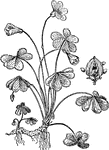
Oxalis
Oxalis is the largest genus in the wood sorrel family Oxalidaceae. Of the approximately 900 known species…

Thoracic Duct
"Human Thoracic Duct and Azygous Veins. a, receptacle of the chyle; b, trunk of the thoracic duct, opening…
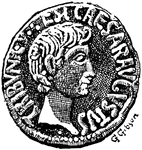
Dupondius, Obverse
The obverse side of the dupondius, "a Roman bronze coin, of the value of 2 asses." -Whitney, 1911
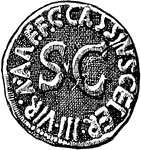
Dupondius, Revers
The reverse side of the dupondius, "a Roman bronze coin, of the value of 2 asses." -Whitney, 1911
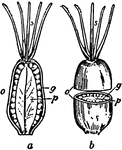
Mouse-ear Chickweed
An illustration of the pistil, female reproductive part of the flower, from the mouse-ear chickweed.…
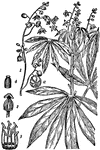
Yuca
The cassava, yuca, manioc, mogo or mandioca (Manihot esculenta) is a woody shrub of the Euphorbiaceae…

Beaumaris Castle
Beaumaris Castle, located in Beaumaris, Anglesey, Wales was built as part of King Edward I's campaign…

Wels Catfish
The wels catfish is a scaleless fresh and brackish water catfish recognizable by its broad, flat head…

Canterbury Cathedral
An illustration of the floor plan of Canterbury Cathedral. Canterbury Cathedral in Canterbury, Kent,…

Durham Cathedral
An illustration of the floor plan of Durham Cathedral. The Cathedral Church of Christ, Blessed Mary…

Female Nautilus without Shell
An illustration of a female nautilus without the shell. "m, The dorsal "hood" formed by the enlargement…

Female Nautilus without Shell
An illustration of the postero-ventral view female nautilus without the shell. "a, Muscular band passing…

Sectional View of Acanthobdella
An illustration of a sectional view of a Acanthobdella, a member of the annelid family. "c, Coelom;…
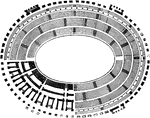
Ground Plan of the Colosseum
"Ground Plan of the Colosseum at Rome, with representation of the Tiers of Seats, and of the Substructure.…
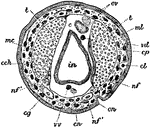
Sectional View of Acanthobdella
An illustration of a sectional view of a Acanthobdella, a member of the annelid family. "c, Coelom;…
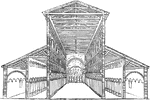
Old St. Peter's Basilica
"Section and Interior View of the five-aisled Basilica of S. Pietro at Rome, before its restoration.…
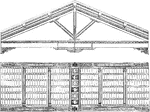
Profile of San Miniato al Monte
"Profile and view from beneath of the Rafters in the Christian Basilica of San Miniato at Florence.…

Écu, Obverse
The obverse side of an écu of James V of Scotland, a Scotch gold coin also called a crown.

Écu, Reverse
The reverse side of an écu of James V of Scotland, a Scotch gold coin also called a crown.

Sea Anemone
Edwardsia beautempsi is a species of sea anemone that lives freely in tubes in the sand, unattached.

Electric Eel
The Electric Eel (Electrophorus electricus) is a fish in the Gymnotidae family of naked-back knifefishes.

Fumitory (Side-view)
An illustration of the side-view of the fumitory flower Fumaria is a genus of about fifty annual herbaceous…

Gulf of Santorin
Bird's eye view of the Gulf of Santorin, during the volcanic eruption of February 1866.
!["Suppose we have a pipe A B laid in a horizontal position so that the centre line is exactly at the same level all along the pope, and differences of level may be neglected. Let water be delivered b this pipe at a steady from a reservoir provided with a constant supply which keeps the free surface level always the same. If the pipe A B is of uniform sectional area throughout, and is at all points offers a uniform frictional resistance to the flow of the water, the pressure will gradually become less at points along it more and more distanct from the reservoir. This is no lonfer the case when the pipe is larger at one place than another, as shown in the [figure]." (Britannica, 1891)](https://etc.usf.edu/clipart/61100/61153/61153_water-flow_mth.gif)
Water Flow in Pipes
"Suppose we have a pipe A B laid in a horizontal position so that the centre line is exactly at the…

Pith-Ball Electroscope
"An instrument for observing or detecting the existence of free electricity, and, in general, for determining…
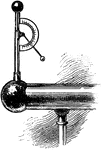
Quadrant Electroscope
"An instrument for observing or detecting the existence of free electricity, and, in general, for determining…

Condensing Electroscope
"An instrument for observing or detecting the existence of free electricity, and, in general, for determining…
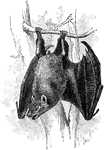
Egyptian Free-Tailed Bat
The Egyptian Free-Tailed Bat (Tadarida aegyptiaca) is a species of bat in the Molossidae family of free-tailed…
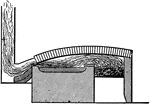
Sectional View of a Reverberatory Furnace
An illustration of a section of the reverberatory furnace. A reverberatory furnace is a metallurgical…

Valerian Flower (Longitudinal Section)
An illustration of a longitudinal sectional view of the valerian flower. Valerian is a hardy perennial…
Disk-floret of a Cornflower (Longitudinal
An illustration of a longitudinal section view of a disk-floret of the cornflower. Centaurea cyanus…

Disk-floret of the Senecio (Longitudinal Section)
An longitudinal section view of a disk-floret of the senecio flower. Senecio is a genus of the daisy…
Emperor Butterfly Larva
The dorsal view of the larva of the Tawny Emperor (Asterocampa clyton), a brush-footed butterfly.

Emperor Butterfly Pupa
The lateral view of the pupa of the Tawny Emperor (Asterocampa clyton), a brush-footed butterfly.

Enarme
"Inside View of Shield, showing Enarme, or Gear. Enarmer, provide, as a shield, with straps." -Whitney,…
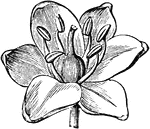
Scilla
Scilla (squill) is a genus of bulb-forming perennial herbs in the Hyacinthaceae. The 90-odd species…
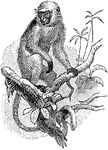
Gray Langur
The Northern Plains Gray Langur (Semnopithecus entellus) is a primate in the Cercopithecidae family…
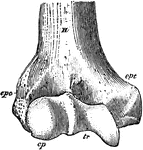
Humerus
"Anterior View, Distal End, of Right Humerus of a Man. H, humerus; epc, epicondyle, or external supracondyloid…

Epiphyllospermous Frond
"Part of Epiphyllospermous Frond. In botany, bearing the fruit or spores on the back of the leaves or…
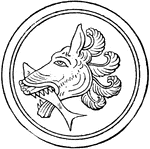
Episemon
Episema were used in Greece as a symbol for a country, region, or used on a shield or badge. This episemon…
Copepod
Also known as fish lice, this is a species of copepod, a parasitic crustacean. "Female of Chondracathus…

Copepod
Also known as fish lice, this is a species of copepod, a parasitic crustacean. "Female of Chondracathus…
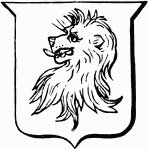
Erased
"A Lion's Head Erased. In heraldry, represented as having been forcibly torn off, the separated parts…
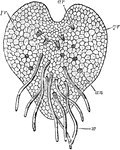
Young Prothallus of Fern
An illustration of a microscopic view under the surface of a young prothallus: pr, prothallus; w, root-hairs;…
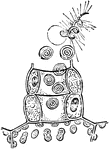
Antheridium of Bracken
An illustration of the anteridium of a bracken. An antheridium (plural: antheridia) is a haploid structure…

Southern Muriqui
The Southern Muriqui (Brachyteles arachnoides) is a wooly spider monkey in the Atelidae family of New…

Assyrian Bucket
This Assyrian bucket is designed with a cord handle and terminates at the bottom with a lion mask. It…
